Docs
You can define plans and addons that map to your products and services in your product catalog. Often you may need to bill your customers for products or services that are non-recurring.
Charges represent products or services that are non-recurring, either purchased once immediately or scheduled for purchase when certain events happen such as subscription activation, trial start, and so on. A charge can also be applied for a customer record when it is not associated with any particular subscription.
Apart from the predefined charges that form a part of the product catalog, you can also add quick charges on an adhoc basis. These can be applied via the Chargebee user interface or via API .
To create a new charge in your Chargebee site, follow these steps:
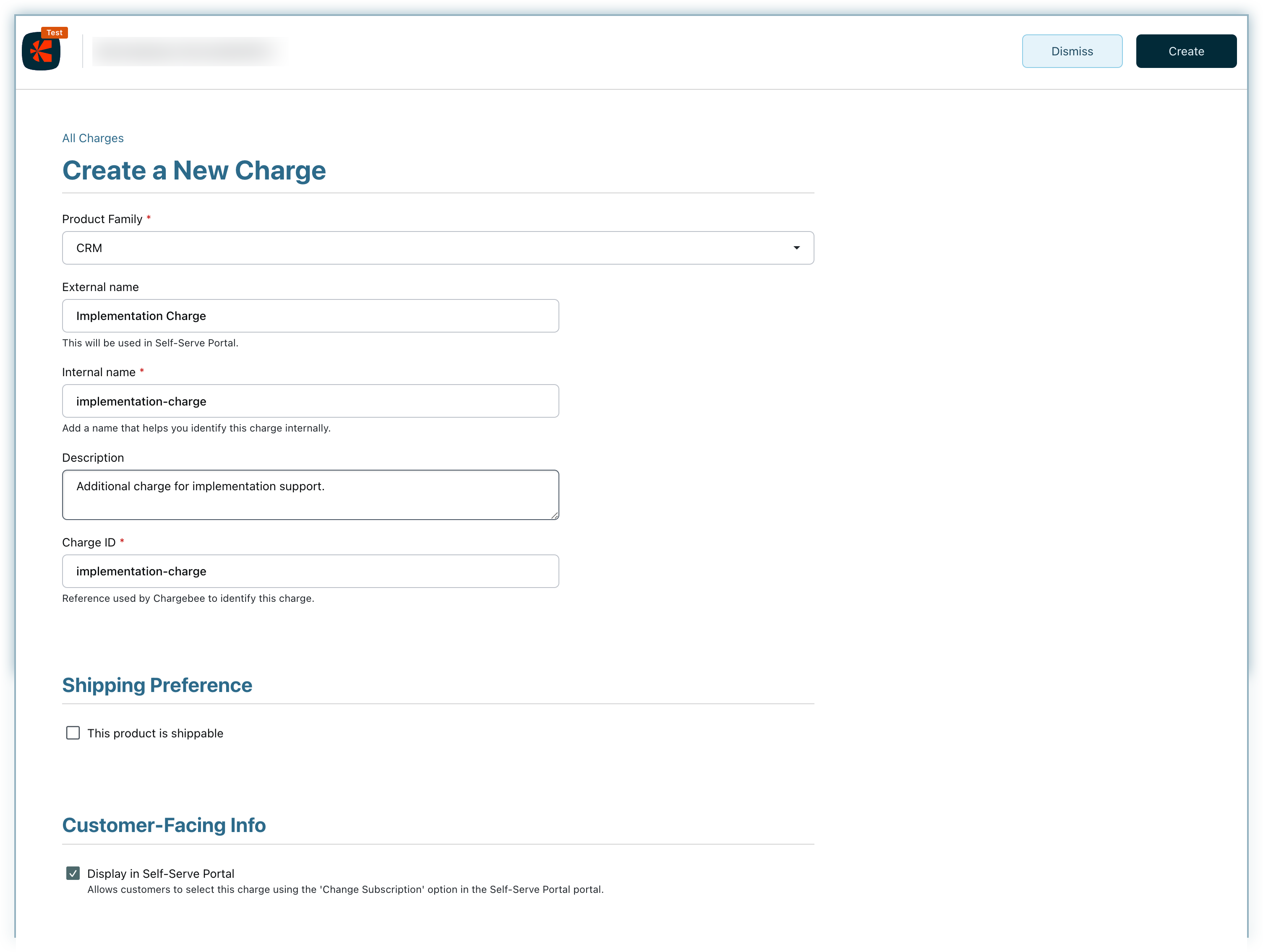
Once you create charges, you can start adding multiple price points for each currency. To define a price point for a charge, follow these steps:
Click Product Catalog > Charges. Select the charge for which you are creating price points.
On the details page, the Pricing section displays all the currencies that you have configured. Go to the currency that you want to add for this charge, and click Set Price.
You can filter for All, Active, and Archived prices using the drop-down and also filter the column such as Currency, Frequency, Pricing Model, Price, and Taxable. You can only sort the Currency column.

In the Create a Price Point page, you can modify the basic attributes of the charge's price point such as:
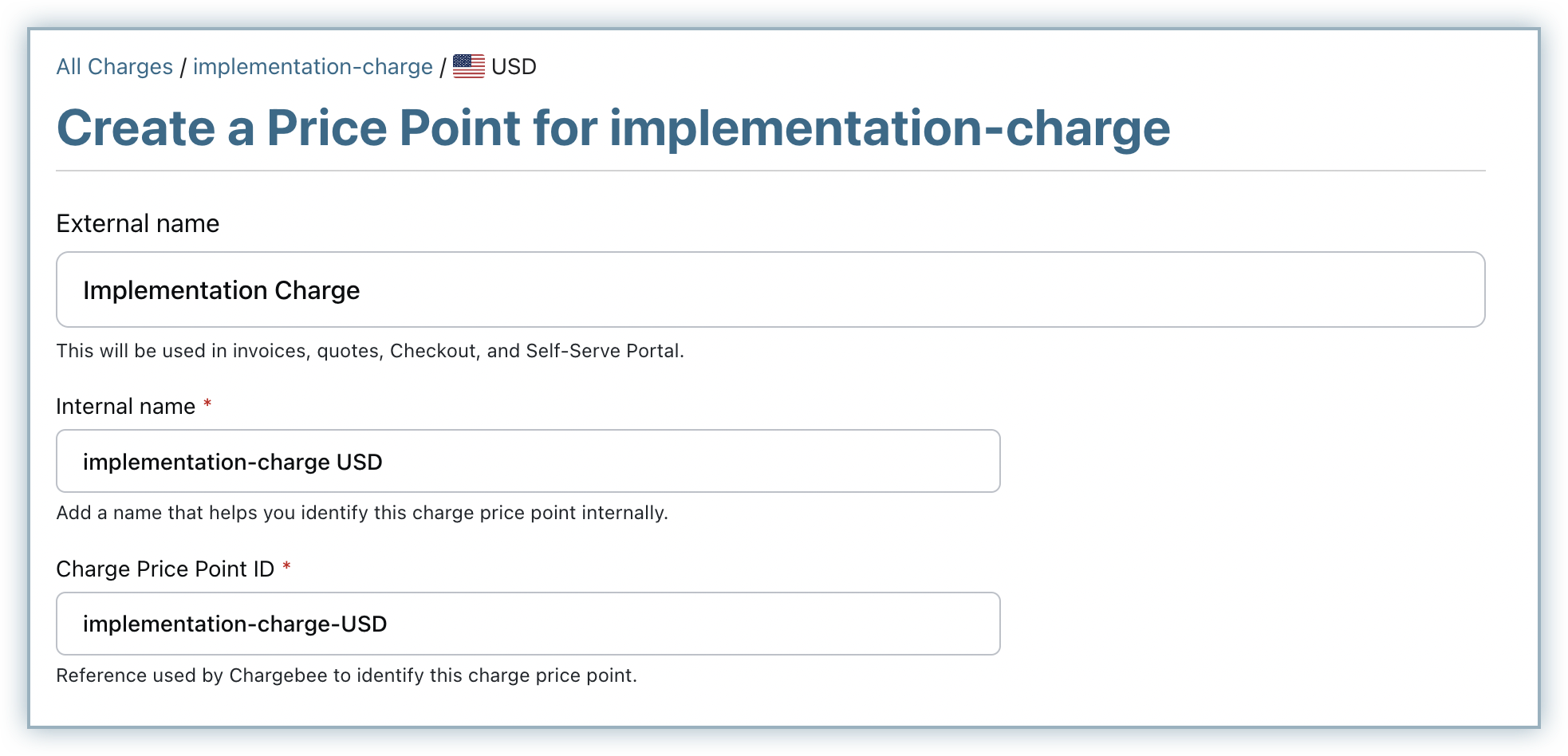
In the Pricing section, you can configure the pricing attributes of the price point such as:
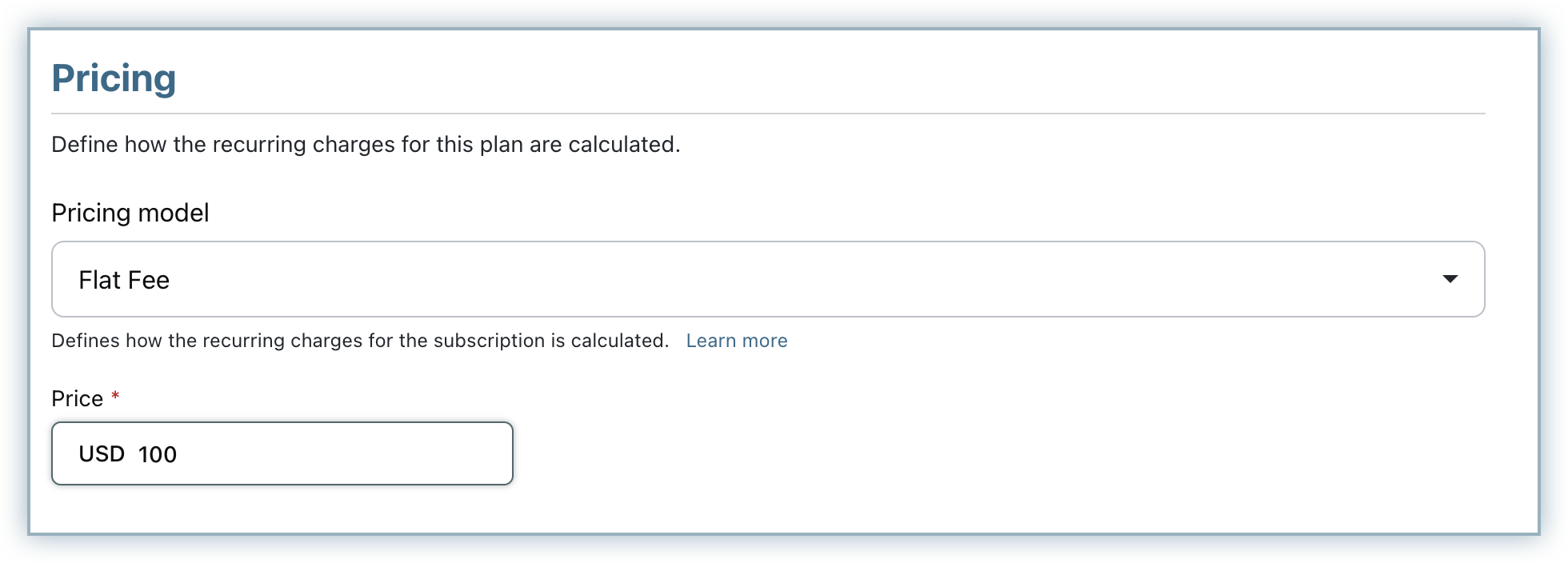
Under Customer facing info, you can do the following:

Taxes: If Taxes have been configured, you can choose to exempt a charge price point from taxes by unchecking This charge price point is subject to taxes. If you are choosing to keep the plan taxable, choose a tax profile for it. This would determine — during invoicing — what taxes are applied to the price of the charge.

Accounting Information: The Accounting Information section helps Chargebee sync up with any accounting applications that you integrate with, like Xero and QuickBooks. Each of the accounting fields captures information that helps track product-specific sales/revenue from an accounting perspective.
Click Create.
You can define multiple price points for each charge, based on the currencies in which you want to offer your charges.
Once you have created your charges and defined price points as required, you can start adding charges to customers or subscriptions in several ways.
The +Add Charge action can be found on the details page of both a Subscription or a Customer.
Go to the respective customer details page and do the following:
Click +Add Charge.
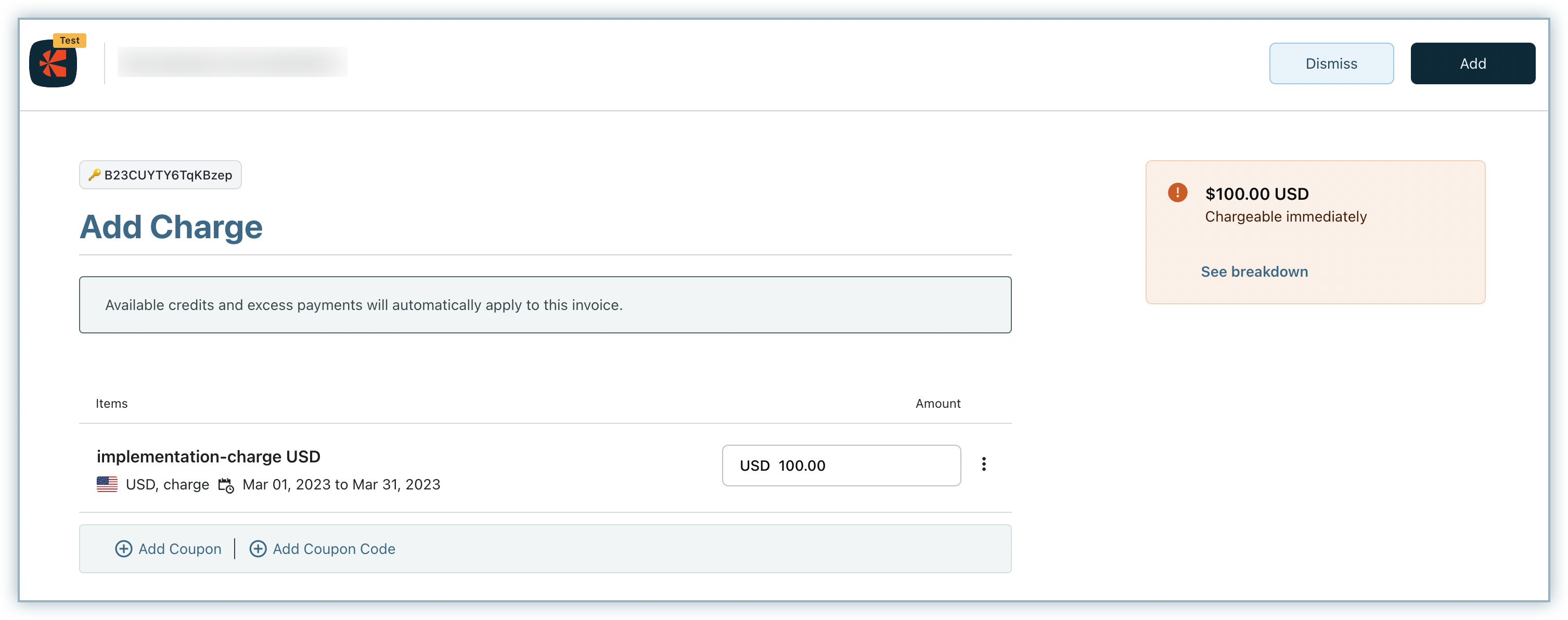
Select the Charge that you want to apply to the Customer.
If needed, change the price of the Charge in the Unit Price field.
Select a coupon to apply. (Only one-time coupons that are applicable to the Charges are available here).
Specify the Service period:
Click Add.
Go to the respective subscription details page and do the following:
You can also add charges while editing a subscription.
You can collect an ad-hoc payment from a customer or a subscription using the 'Create Quick Charge' option. This option can be quite useful, especially when you come across scenarios where you have to collect payments from customers for goods or services that are not normally included as a part of their subscription model. It can also be used when you want to collect payment for a product or service that is not modeled into your system like a non-recurring addon.
A quick charge can be applied to a customer or a subscription via the Chargebee UI or via API .
On your Chargebee site, the Create Quick Charge action on the details page of either a Subscription or a Customer can be used to add a quick charge.
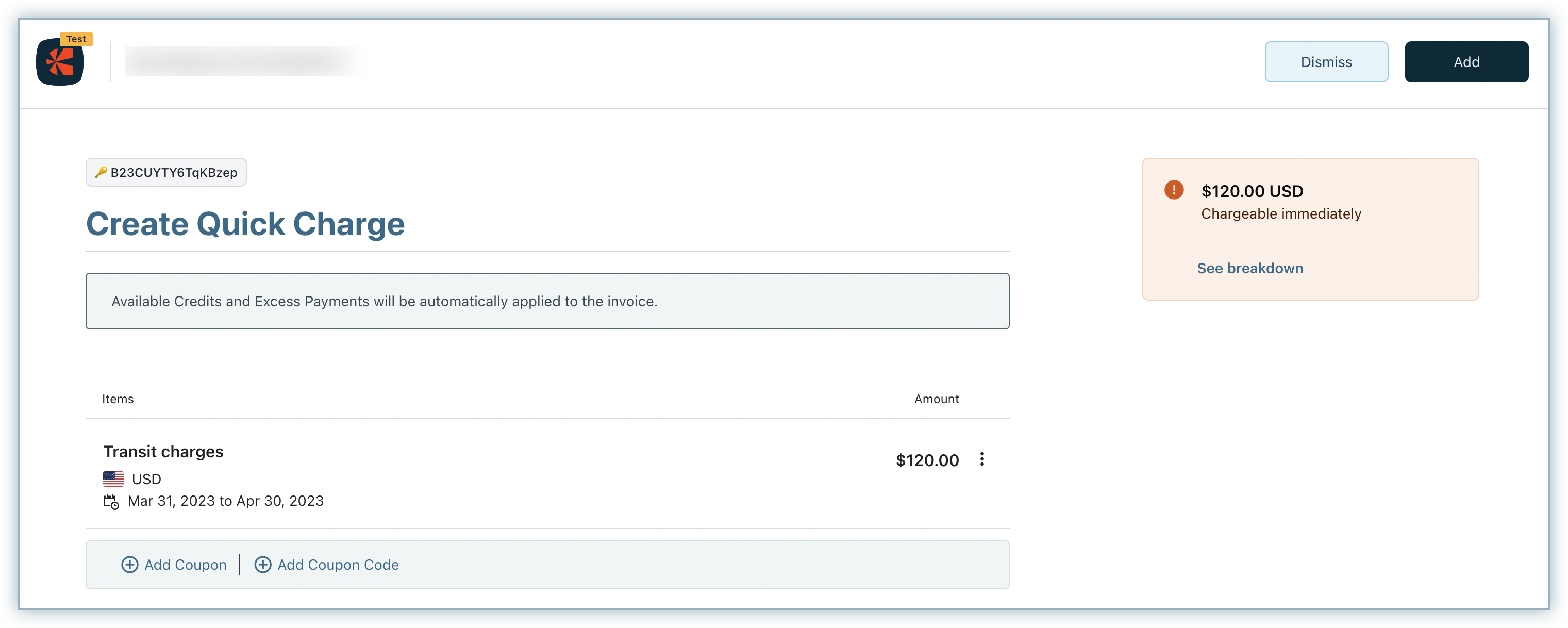
Applying to a Customer
Note
The time component can only be chosen when your site runs on millisecond-based billing mode.
Applying to a Subscription
Note
The time component can only be chosen when your site runs on millisecond-based billing mode.
If there have been multiple one-time charges against the subscription, the total of all the charges will be shown on the subscription details page.
Note: You cannot view the total one-time charges for a Customer on the UI.
In addition to adding charges or creating quick charges for a customer or subscription, you can also add one-time charges and quick charges together. When you want to add multiple ad-hoc charges or quick charges to a customer or a subscription, you can make use of the Add One-time Charges and Quick Charges action.
To raise an Invoice for multiple ad-hoc charges and addons, follow these steps:
Navigate to the details page of the customer or subscription.
Click Add One-Time Charges and Quick Charges on the Action panel.
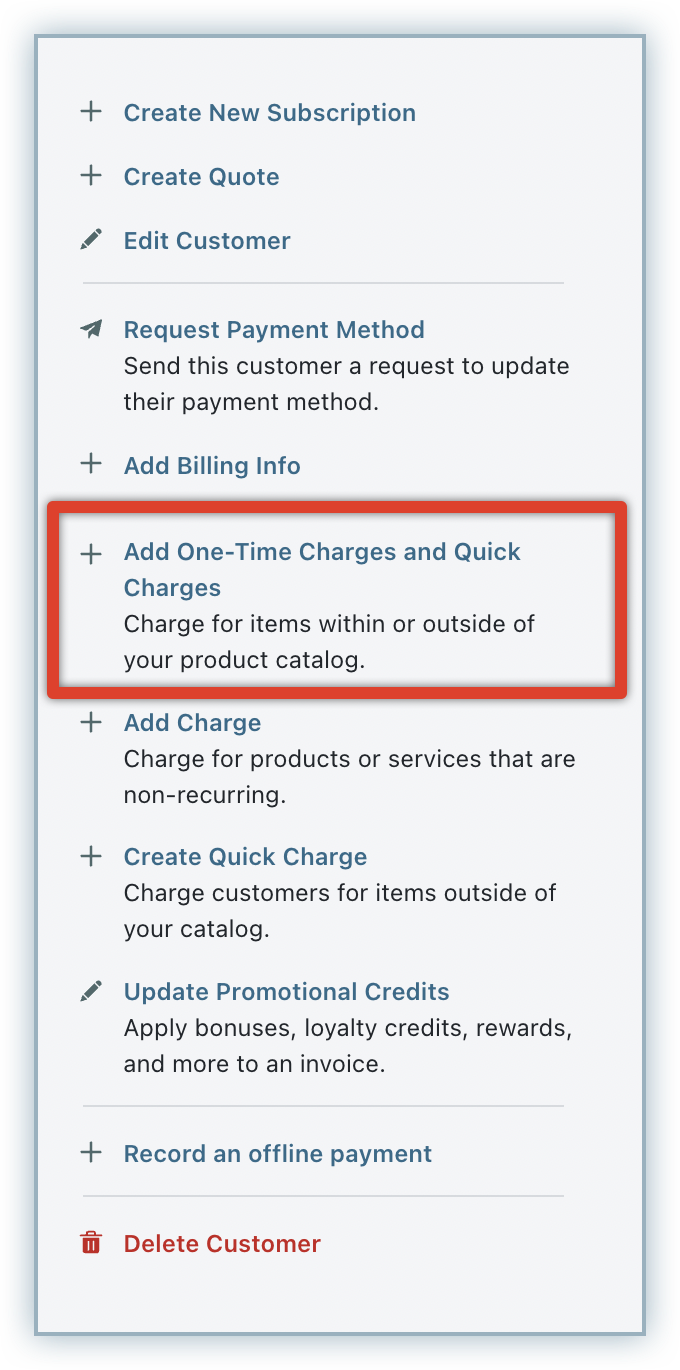
In the Add One-time Charges and Quick Charges page, click Add Quick Charge to add any ad-hoc charges.
In the Add Charge pop-up, enter the following details:
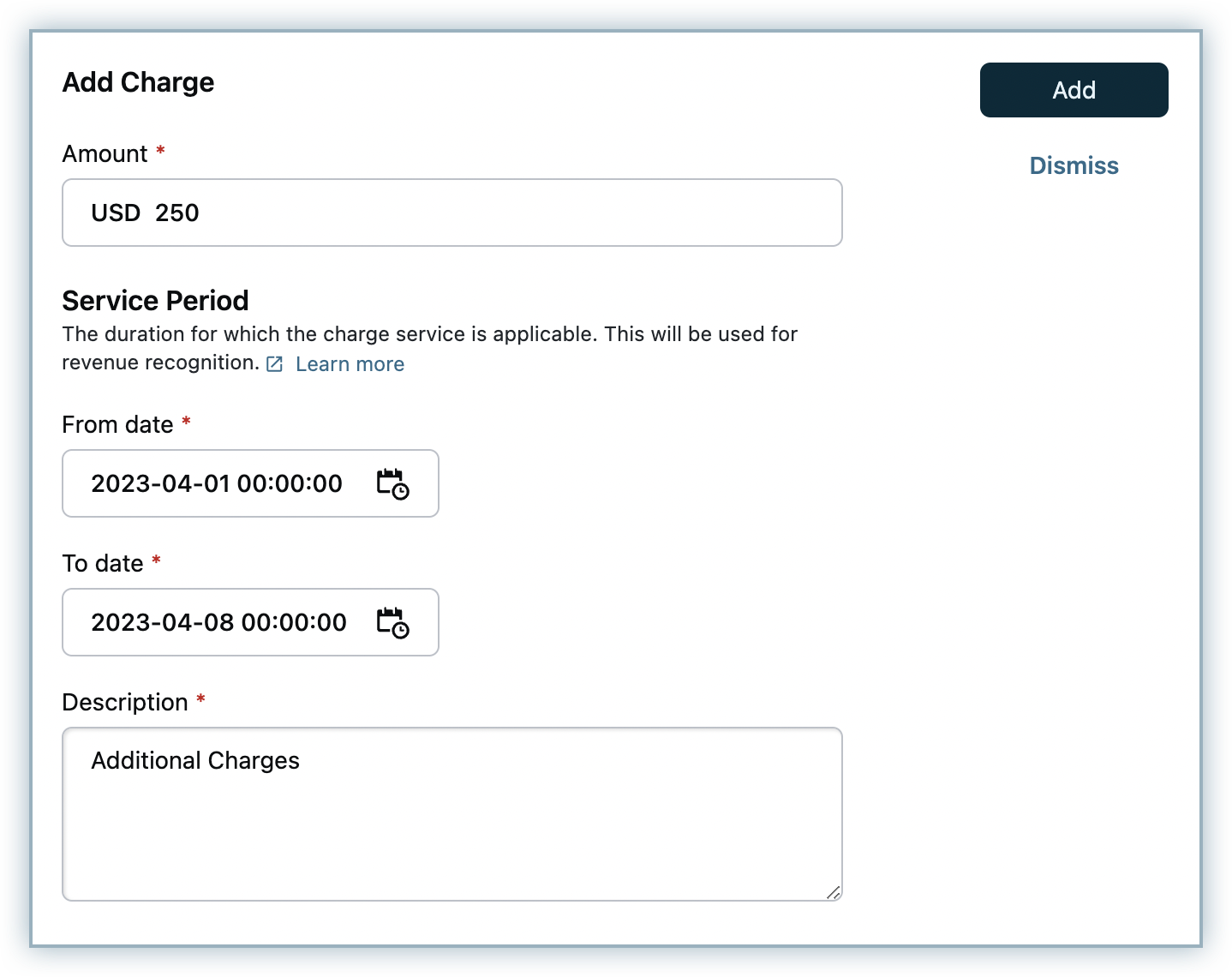
Click Add Charge to add non-recurring addons.
You can click Add Coupon/Coupon Code to apply a coupon. (Multiple coupons of the same type can also be added. Contact support to avail this feature.)
If the charge is for a physical good to be shipped, you can add the shipping address details. You can choose to ship to the customer's billing address, or you can even add the shipping address details. Any existing shipping addresses available for the customer are also available for selection.
Select the preferred Payment method from the dropdown.
Specify the PO number if required.
Under Invoice Notes, you can add additional information to be displayed to your customers on the invoice contextually. Invoice notes configured for Invoices in general, and those added for customer or subscription, non-recurring addon, if any, gets displayed here as well. You can remove some of these notes and add a new note as required. This note is displayed first in the invoice under Invoice Notes.
Click Add.
